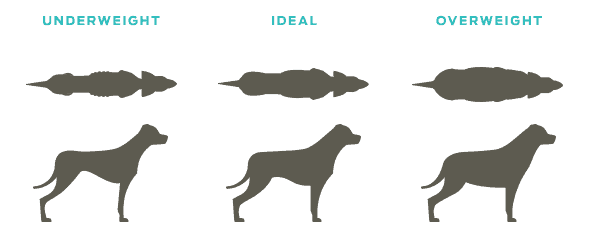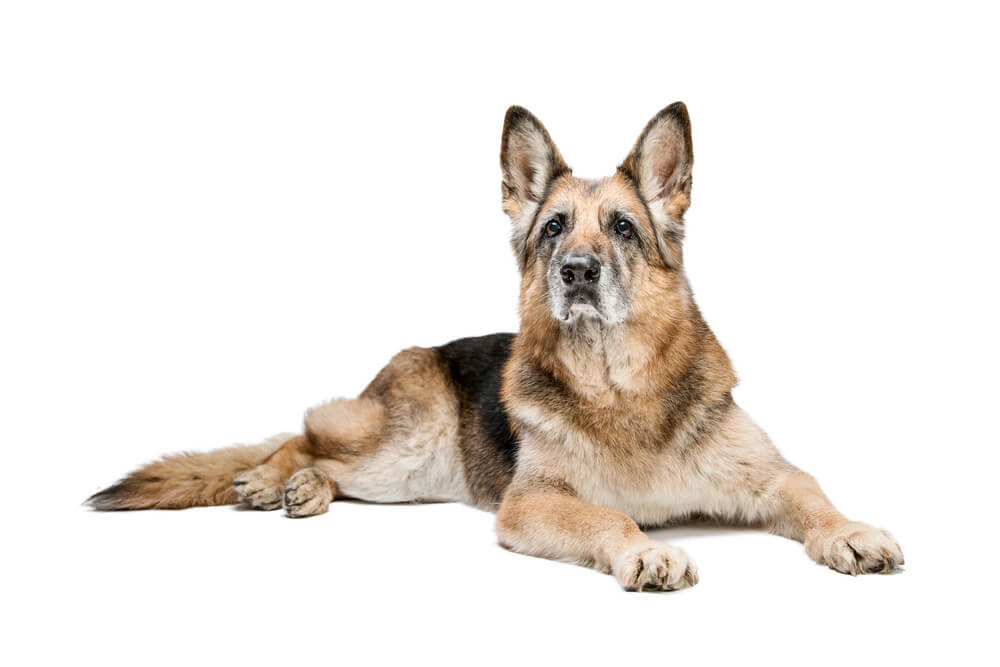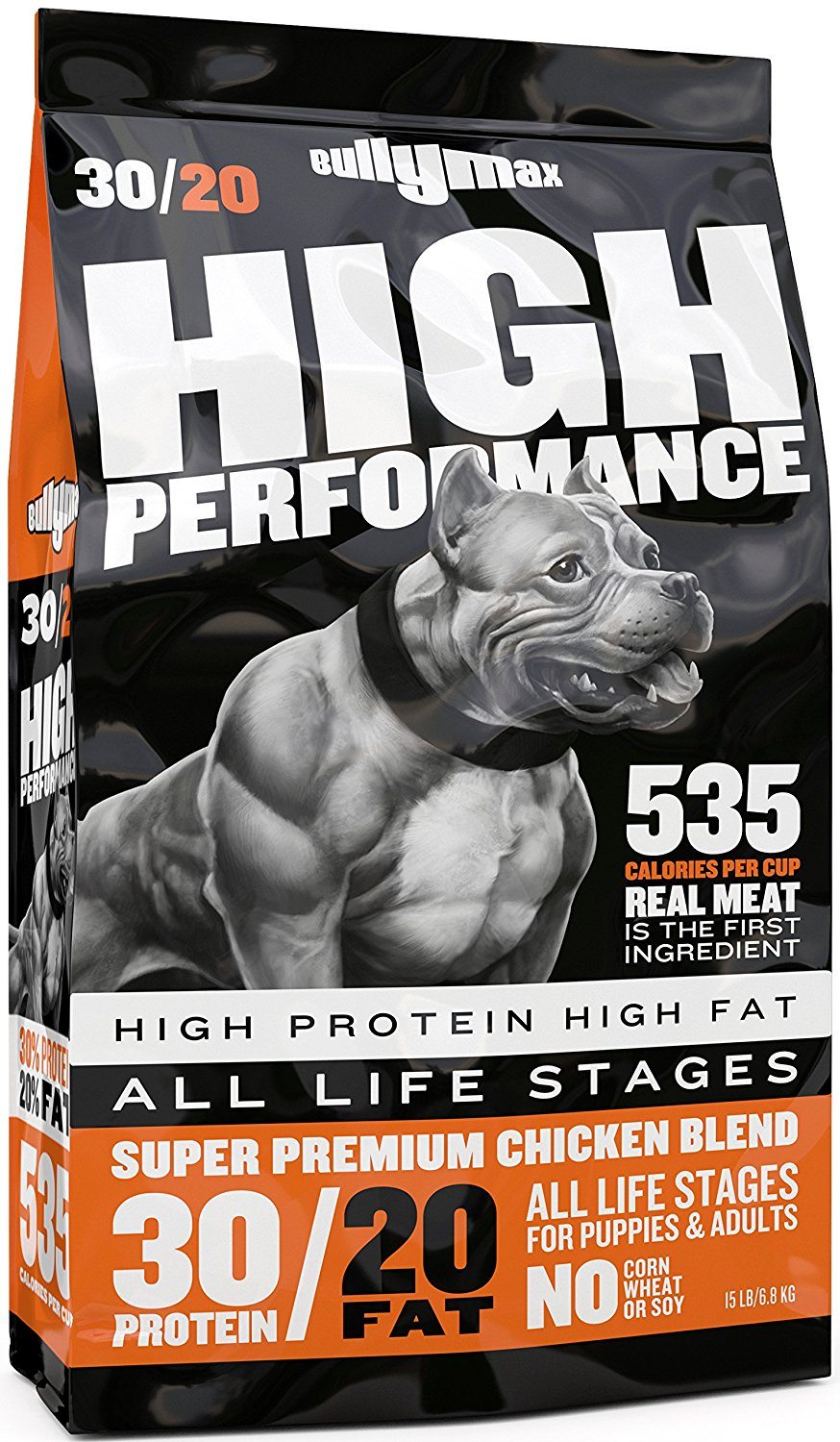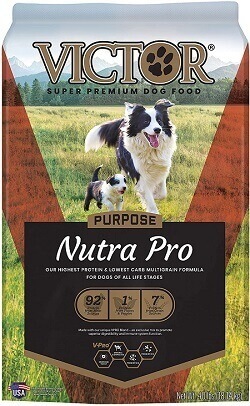Our canine companions, though more likely to fatten over time, can gradually start to lose weight due to many problems such as dietary or lifestyle changes, changes in environment or stress levels, old age or poor metabolism, and illnesses.
Underweight dogs are not healthy dogs. They will be prone to illnesses and a myriad of health risks. Recently, a more serious issue we have encountered is the misperception of a dog’s actual body shape.
For example, a 2011 study found that over 40% of dog owners are misperceiving their dog’s body shape. In this study, 11% of dogs were actually underweight. This misperception can be fatal.
Though more rampant in the case of overweight or obese dogs, owners are also sometimes likely to categorize underweight dogs as “normal” without having the tools to determine the BCS (body condition score – the pet version of human BMI) correctly.
Having an underweight dog is a problem. Not knowing that your dog is underweight is an even bigger one. Let’s find out how can you determine your dog’s weight level at home.
Is My Dog Too Skinny?
Usually, a dog is too skinny or underweight if its spine, ribs, and pelvic bones are clearly visible. This means that there is little to no fat between the skin and the bones.
Barring certain special circumstances such as a dog that was recently rescued or a dog undergoing medical treatment, these bones should not be visible as clearly as if there was hardly any skin over them.
So, how to tell if a dog is underweight? A vet,
checking bones, and tracking weight.
The best way to find out whether or not your dog is underweight is to go directly to a vet for a weight checkup.

If that’s not an option:
Check the bones. If the bones are showing through clearly and it is a dog that is not suffering from anything that might be the reason behind its skinniness, then measure its weight. Find out the correct average weight for the breed and compare. Use this weight tool from PetMD to find the ideal weight for your pet’s breed and age.
For example, the average weight of a German shepherd is 66-88 lbs. for a male and 48.5 to 70.5 lbs. for a female. If your adult German shepherd weighs remarkably lower than this, let’s say 40 lbs. on a male, then he is underweight.
Note that age also plays a critical role here. Younger and older dogs are more prone to vary from the average weight. Don’t use the global average weight metric to compare an old or a very young dog’s weight.
Help! My Dog Won’t Gain Weight. Why?

Let’s go through all the possible reasons why your dog isn’t gaining weight.
Insufficient Diet
An insufficient diet is the #1 culprit more often than not.
Underfeeding
Underfeeding is a surprisingly dominant issue in modern households. If you are unable to provide sufficient nutrition and satiety to your dog, don’t be shy to ask fellow dog owners or ask for help in forums.
There are plenty of pet owners willing to help you. They will help guide you towards a better diet for your dog.
Health Condition
If the dog is not a particularly picky eater and if it’s getting sufficient food and still getting underweight then it’s time for a visit to a good vet.
Calorie Deficit (Active or Working Dogs)
A rare reason can be a net calorie deficit. Even though a dog is eating well, it can still lose weight if it is especially active and energetic.
This happens most commonly with dogs who prefer to spend the majority of their day outdoors engaged in various activities that burn calories. This is good from a fitness point of view, but you need to increase the dog’s calorie intake in this case.
How To Increase A Dog’s Appetite?

Increasing your dog’s appetite can help with weight gain goals. Have you been trying to feed your dog but it just won’t eat? Don’t worry, we have some solutions for you.
First of all, it should come without surprise that you have to try a few different options when it comes to dog food. Some foods might bring back unpleasant experiences or upset digestion. A product that works wonders for your friend’s dog isn’t guaranteed to work for yours too even if both are the same breed and age.
If your dog is not eating then it can also be an underlying medical condition – so get that checked first. If you are sure that there is no health condition and yet your dog doesn’t eat, then it can also be a picky eater.
9 Basic And Easy Tips To Enhance Your Dog’s Appetite
-
1
Take your dog for a walk before their mealtime.
-
2
Cut down on table scraps and leftovers. Provide them with their own individual eating routine and diet and adhere to specific timings
-
3
Use frozen dog toys that can hold food inside (like a Classic Kong or the Chilly Penguin). This mixes fun with eating.
-
4
Make the food more palatable by warming it and adding a dog-friendly gravy, wet food, tuna juice, or chicken stock to it. Some herbs like oregano and peppermint can also sometimes stimulate appetite.
-
5
Place the bowl at a comfortable height. Also try feeding directly on the floor or a mat (clean the surface first, of course). Try giving food separate from other pets.
-
6
Try safe Vitamin B supplements or dog foods with high Vitamin B content.
-
7
If it is a new dog, hand feeding or scattered food might be better options than placing food in a bowl. Go for a suitable dry kibble.
-
8
Vets also recommend CBD to stimulate a dog’s appetite.
-
9
You can top kibble with chunks of chicken, turkey, salmon, or lamb to make the food more palatable.
Genetics
The breed’s genetics also influence appetite. Breeds such as Siberian huskies will only eat until they are full to maximize the nutritional value out of their food bowl. On the other hand, Labrador retrievers will eat until they bloat, fall, and roll right out of the door.
Long story short, not all dog breeds are hearty eaters like pugs or Labradors. If you happen to have a breed that generally eats only to keep its belly full and nothing else, then you need to switch from a “more food” mentality to a “more protein/nutrition in the same quantity” mentality.
Advanced Guidelines
Here are some guidelines to follow to improve your dog’s appetite and help it eat more.
Best 4 Dog Foods For Weight Gain
Now, let’s talk about dog food products that are best for weight gain.
We have determined the following four dog foods to be the best in category (namely, for pups, for adults, for active dogs, and for senior dogs).
You simply cannot go wrong with any of these.
1. If two numbers are mentioned such as 30/20, it means that the formula contains 30% protein and 20% fat in its overall composition. The remaining 50%, in this case, would be other ingredients.
2.
The measure of calories is actually kcal (kilocalories) and not “calories”. Kilocalories, however, can be denoted by Calorie (with an uppercase C). So, when kcal is mentioned, it means the same as one Calorie (or 1,000 calories).

These pellets pack quite the punch. Though the product is recommended for all ages, we generally see better customer experience in the case of puppies and younger dogs.
This high-calorie and high-protein dog food from Purina Pro is rated 4.6/5 on Chewy across 1200+ reviews with 94% recommendation and 4.8/5 on Amazon across 6200+ ratings with 86% 5-star reviews.
The concentrated nutrition in this dog food provides optimized oxygen metabolism which increases endurance as a happy side effect.
One of the few “sports performance” grade dog foods out there, the Purina Pro Plan 30/20 Chicken & Rice uses chicken as its core ingredient, which helps add weight to your dog’s muscles. The added amino acids also help nourish muscles.
This food has the best weight gain effect for energetic puppies across breeds. Testament to its amazing quality, the product ranks #11 across all canned dog foods – and not just those meant for weight gain or sports performance!
It is highly recommended by vets and used by breeders.
- Calories: 484 kcal/cup.
- Ingredients: With over 40 ingredients in a tasty, dry, pellet-based dog food formula, the core ingredients in the Purina Pro Plan 30/20 Chicken & Rice include chicken, corn gluten meal, beef fat, poultry byproduct meal, whole grain corn, dried egg content, fish meal, and so on. The product contains natural flavoring.
Where to Buy: Grab a sample bag of this high protein dog food on both Chewy or Amazon.com.

The High Protein & Fat Dog Food from Bully Max is a 30/20 formula that comes loaded with a whopping 535 kcal per cup. This is the highest in the category.
High-protein and high-calorie, the Bully Max 30/20 claims to be the only 5-star rated performance dog food out there as well as the only meat-based formula in its class. The composition is totally natural with no corn, no wheat, and no soy.
This product truly shines when it comes to improving the physique of your dog and helping it gain weight. Muscular development and weight gain aside, the product also helps improve the strength, alertness, and energy levels of adult dogs across breeds.
Note that this product is not suitable for puppies. The minimum age before you can start feeding this dog food is 4 weeks.
- Calories: 535 kcal/cup.
- Ingredients: With nearly 45 ingredients, the Bully Max High Performance Super Premium Dog Food features chicken, brown rice, chicken fat, fish meal, and egg product as main ingredients. Add to those dozens of minerals and vitamins important for weight gain and muscular development and you have the perfect food for weight gain in adult dogs.
Where to Buy: Being one of the best-rated weight gain dog foods on Amazon, that is also where you’ll find your kibble bag.

VICTOR has three main product lines for dog food: Classic, Select, and Purpose. Purpose is need-oriented and the different types of products in this line cater to different needs such as performance, senior health, no-grain diet, and so on. The Nutra Pro from VICTOR Purpose is aimed at high-energy dogs of all ages and breeds.
This is a 38/18 formula with 401 kcal per cup. The nutrient-rich base recipe is formulated around beef, chicken, and fish meals, which allows it to punch above its weight and compete with higher kcal/cup products.
Nutra Pro is the highest-protein and lowest-carb multigrain formula from VICTOR. Great for active dogs, it is also excellent for growing puppies as well as pregnant and lactating females.
This dry kibble is all your active dog will need to stay fit and gain weight.
- Calories: 401 kcal/cup.
- Ingredients: Nutra Pro has over 50 ingredients. Key among these are chicken, beef, and fish meals. Other important ingredients include whole grain millet, chicken fat, and a bunch of supplements as well as minerals, among other things.
Where to buy: This super premium dog food is available on both Chewy and on Amazon.

The majority of high-calorie dog foods are meant for active young and adult dogs. These include high protein content and low fat and carbs content. This is ideal for active dogs, but for seniors not so much.
For weight gain in senior dogs who are less active, you need a higher fat and carb content in the formula. And that’s what Complete Health Senior Chicken & Barley recipe from Wellness Pet Food has.
With nearly 27% fat and 50% carbs (and only ~24% protein), this chicken and barley formula is a great natural tool for weight gain in senior and older dogs.
- Calories: 416 kcal/cup.
- Ingredients: The product contains 43 ingredients spread across vitamins, minerals, amino acids, etc. The main contents, however, are fiber, carbs, fat, and protein coming mainly from deboned chicken, tomatoes, carrots, ground barley, ground brown rice, rice, chicken fat, and sweet potatoes.
Where to buy: Various kibble bag sizes can be bought online from Chewy and from Amazon.
Best Vitamin For Weight Gain
You will find a ton of weight gain supplements and dog food products loaded with a bunch of vitamins. But which vitamin actually aids in weight gain in canines?
B Vitamins and Vitamin D are both important in any food bowl if you want to increase your dog’s weight. Extensively review all types of dog food products available to you and check their ingredients. The higher the B Vitamins are, the better it will be for you.
As per our research, we found Bully Max High Performance dog food to work really well to provide ample dosages of the required vitamins (check the review above).
There is no product that is formulated around vitamins. Vitamins are always just additions. Even if there is one, it is most definitely not made for weight gain. As such, our previous pick of Bully Max High Performance fits the bill.
Vitamin A deficiency can also lead to weight loss among other things according to a study by the National Research Council. That’s another vitamin you need to ensure in your dog’s diet.
Best Dog Weight Gain Supplement

The best weight gain supplement for dogs is the Nutri-Cal High-Calorie Dog Dietary Supplement. This easy-to-administer malty flavor oral gel is suitable for all ages and breeds.
This high-calorie canine nutritional supplement has a delicious taste and features a special concentrate of vitamins, amino acids, and nutrients that help your dog gain weight. It can also be used as a stress reliever in anxious or ailing pets.
If you are looking a high-calorie supplement that also boosts your canine friend’s appetite, then this is where your search ends.
Where to buy: Available on both Chewy and Amazon.
Best Foods To Fatten Your Dog

Protein Rich Foods: Chicken, Fish, Eggs, Beef, Seeds, Milk
Leftovers and table scraps are almost always a bad idea. That doesn’t imply that human food is not safe for dogs. In fact, many of the foods we eat are great for dogs.
Let’s look at a few human foods that fatten your dog without any side effects or digestive issues.
- Plain, unsalted peanut butter is high in fat and simply the best food to fatten up your dog.
- Scrambled or over-easy eggs without anything added to them (no salt, no seasoning, no oil, etc.).
- Lean meat – either raw or cooked.
- Cottage cheese and cheese.
- Bread is good for calories and can also work as a treat.
- Cooked boneless salmon.
Satin balls are another great option for increasing weight. You can make them easily.
Take ground beef, oatmeal, cereal, molasses, wheat germ, gelatin, coconut oil, and egg in a large bowl and mix well. Take a small amount of the mix and roll it to form a small ball. Repeat with the rest of the mix. Store these satin balls in the freezer for best results.


